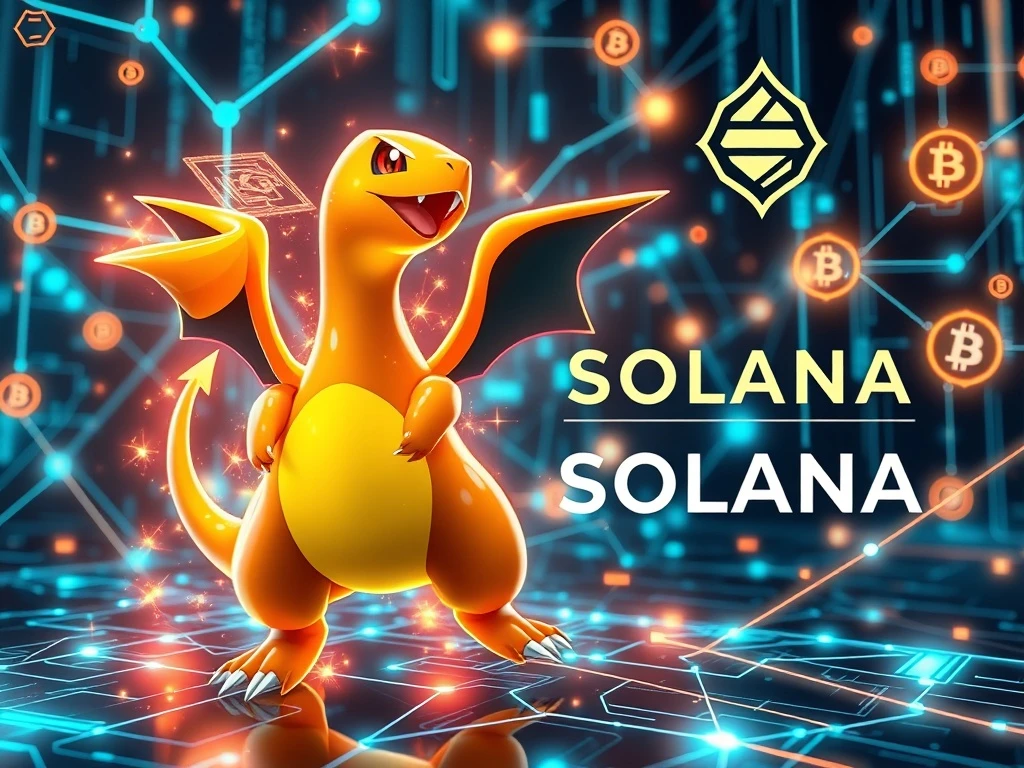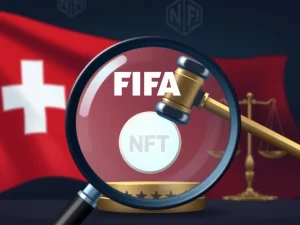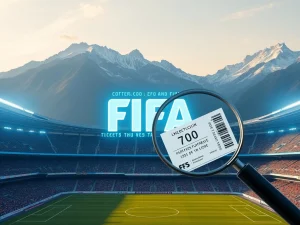Unleashing the Future: Pokémon Cards on Blockchain Poised for a Polymarket Moment

The world of collectibles is on the brink of a major transformation. Specifically, Pokémon cards on blockchain technology are set to experience a groundbreaking shift. This move will digitize trading after decades of physical exchanges. Bitwise research analyst Danny Nelson predicts a ‘Polymarket moment’ for these popular trading cards. This means a significant innovation, previously confined to crypto, will soon break into the mainstream. Enthusiasts and investors alike are watching this exciting development.
The Dawn of Digital Collectibles: Pokémon Cards on Blockchain
Pokémon trading cards are poised to become the next major real-world asset (RWA) to transition on-chain. This shift could bring a massive $21.4 billion market to the blockchain. Bitwise research analyst Danny Nelson shared this insight on Thursday. He believes Pokémon and other trading card games will soon have their ‘Polymarket moment.’ This analogy refers to a time when a crypto-native innovation achieves mainstream recognition. Polymarket notably did this for prediction markets.
This transformation signals a significant evolution for digital collectibles. For years, trading these cards involved physical meetups and shipments. However, blockchain technology offers a more efficient and transparent alternative. This digital revolution could fundamentally change how collectors buy, sell, and verify their valuable assets. The potential for innovation in this space is immense. Consequently, the industry is closely monitoring these developments.
RWA Tokenization Crypto: A New Frontier Beyond TradFi
RWA tokenization crypto has grown significantly, reaching a $28.2 billion market in 2023. However, this growth primarily focuses on traditional finance assets. These include stocks, treasuries, commodities, private credit, and real estate. While tokenization offers benefits like 24/7 trading and potential cost savings for these assets, existing digital rails already serve them well. Nelson explained that these assets do not experience a fundamental transformation.
Conversely, Pokémon card trading stands to gain far more from blockchain integration. Nelson highlights the current inefficiencies. Sellers still physically ship their valuable Charizard, Pikachu, and Gardevoir cards to buyers. This process is often slow, costly, and prone to issues. Despite these challenges, market leader Whatnot facilitated $3 billion in sales last year. This demonstrates the immense demand within this largely informal market. Tokenization could provide a much-needed upgrade to this system.
Collector Crypt on Solana: Paving the Way for On-Chain Trading
A new market leader is indeed paving the way for this digital transformation. Nelson’s observations align with the emergence of Collector Crypt. This platform tokenizes Pokémon cards on Solana, enabling fast trades and profitable exits. Solana’s high throughput and low transaction costs make it an ideal blockchain for such an endeavor. This innovative approach addresses many pain points of traditional card trading. It offers speed, security, and global accessibility.
The token backing Collector Crypt, CARDS, has already seen remarkable success. It rose tenfold to a fully diluted volume of $450 million since its launch last Saturday. Nelson noted this impressive performance. He suggests traders are rapidly pricing in its revenue-generating potential. This signals an annualized revenue of $38 million. Furthermore, much of the early hype centers on these yields potentially flowing back to token buybacks. This mechanism could create a sustainable ecosystem. The Pokémon card trading frenzy has also boosted demand for Collector Crypt’s Gacha Machine project. This project generated $16.6 million in revenue over the past week alone. This clearly indicates strong market interest.
Surging NFT Trading Volume Signals Broader Market Shift
The burgeoning interest in tokenized Pokémon cards aligns with a broader trend in the digital asset space. Meanwhile, NFT trading volume has shown a significant rebound. According to crypto analytics platform DappRadar, NFT trading volumes increased by 9% month-on-month in August. This marked its largest tally since January. Despite this 9% rise, the overall sale count actually fell by 4%. DappRadar explained this phenomenon. It suggests that fewer assets traded hands, but collectors paid more per sale. This indicates a growing willingness to invest higher amounts in individual digital assets.
This trend underscores a maturing market for digital collectibles. It also highlights increased confidence in their long-term value. The intersection of traditional collecting and blockchain technology is creating new opportunities. This evolution is captivating both seasoned crypto enthusiasts and new participants. The success of platforms like Collector Crypt further validates this burgeoning market. It demonstrates the real-world utility of blockchain beyond traditional finance.
The Future of Digital Collectibles: What’s Next?
The move towards tokenized Pokémon cards is more than just a passing trend. It represents a significant step in the evolution of digital collectibles. Nelson believes that while Pokémon ETFs or investment funds may not appear immediately, their arrival might be sooner than anticipated. This foresight suggests a future where these assets become more formalized and accessible to a wider investment audience. Pokémon cards and other trading card games, like Magic: The Gathering, have existed for about three decades. Their longevity predates the concept of non-fungible tokens (NFTs). Now, they are embracing this technology.
Ultimately, this convergence of physical collectibles with blockchain technology offers unprecedented possibilities. It promises enhanced liquidity, verifiable ownership, and global reach for beloved assets. As platforms like Collector Crypt continue to innovate on Solana, the landscape of collecting will undoubtedly change. This exciting ‘Polymarket moment’ for Pokémon cards marks a pivotal point. It signifies the mainstream adoption of blockchain for tangible, cultural assets. The future of trading these cherished items looks undeniably digital.









